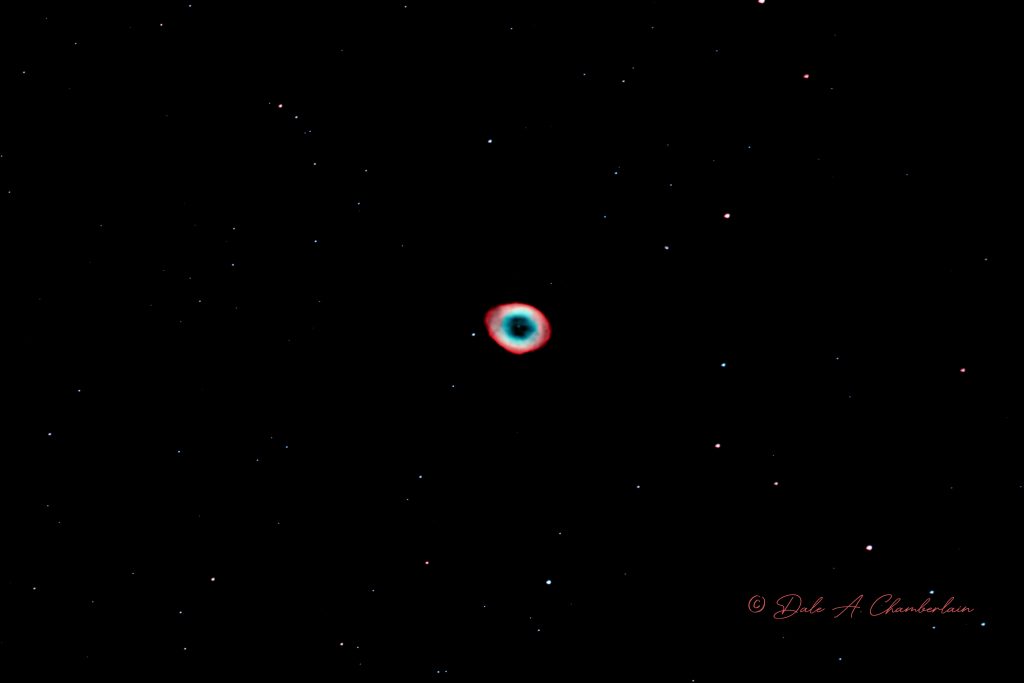
Object:This is the Ring Nebula (aka Messier 57, M57 or NGC 6720), a planetary nebula in the northern constellation of Lyra. Such objects are formed when a shell of ionized gas is expelled into the surrounding interstellar medium by a red giant star, which was passing through the last stage in its evolution before becoming a white dwarf.
It is 2300 light years away and gives you an idea of what our sun will look like in 4-5 billion years. When that happens, the outer envelope of dust and gas ejected by our dying sun will swell to become a red giant extending past the orbit of Venus and Earth, and possibly Mars. What is left of the sun will heat up and shrink down to a white dwarf about the size of Earth but much denser. The nebula will be visible for 10,000 to 20,000 years — a blink of an eye on the cosmic timescale. Its gas and dust will slowly disperse, eventually providing the raw material for a new generation of stars and planets.
This is a work in process. I will collect more data at shorter and longer exposures to get a high dynamic range (HDR) image. Just waiting for clear skies again!
Taken: June 25, 2020
Telescope: Astro-Tech 14” RC with Starizona Apex ED 0.65x reducer
Mount: Paramount ME II unguided
Camera: ZWO ASI1600MC-Pro (cooled to -10C; Gain: Unity gain) Bin 1×1.
Focuser: Moonlite Nitecrawler
Rotator: Moonlite Nitecrawler
Filters used: Optolong L-eNhance on a ZWO 8 position filter wheel
Exposures: 73×30 seconds for a total exposure time of 36.5 minutes; calibrated with 40 dark frames, 40 flat frames with 100 bias frames.
Seeing Conditions:
Software:
Post processed with PixInsight and Photoshop CC 2020.
Image capture: Sequence Generator Pro